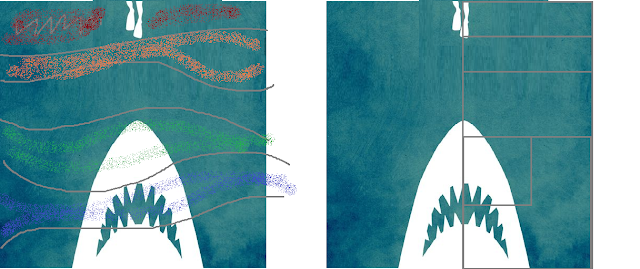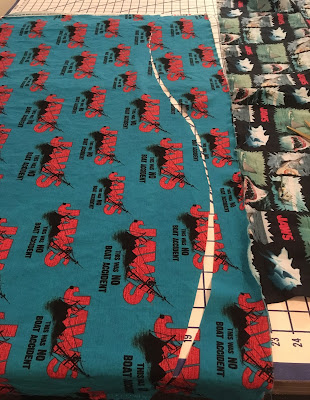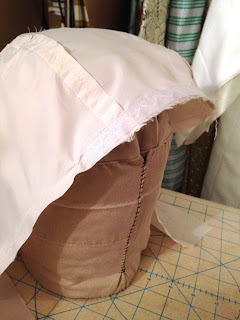It's not going to rain for awhile.
 |
| I just look sooooo excited, don't I? Flattering angle, great lighting, happy face... |
Which is good, because I need to put this aside for awhile. It needs more than I can give it right now. It's sucked the fun out of me.
I do think this raincoat has a lot of promise.
It fits. It fits over my enormous sweatshirt and the big sleeved Miyake shirts. It covers my backside. The sleeves are long enough and I can raise my arm. I put in useful pockets at just the right points.
It will take a very rainy day. It has reflective bits and a visible print. The hood will stay up but the jacket isn't hanging from my head.
It just took so long to get here. Every step has taken a day of thinking and rethinking; I'm running out of time before I'm working full time and have 'pace around and change my mind' time.
And I need that 'pace around' time for the big projects.
I did not cut these pieces out. I redrafted them. Twice. But I did start with that McCall's jacket (ended up raising the sleeve angle so it was more straight across)
 |
| See, the shoulder seam has less of a slope to it now |
When I got it on the table, it was offgrain, but what isn't these days?
Fabric Fusion won the seam sealing contest
The nylon can be ironed. And if it had a weight on it overnight, it would stay pressed. Mostly.
Mostly.
I put a little horsehair braid in the seam at the front of the hood. That hood needs more overhang at the forehead.
Things did not line up perfectly, but I didn't expect them to. Four foot rule.
Numerous zippers: side hem seam. Put that curved line down at the bottom and the side rather than the top center of the coat. At least I don't have to look at it all the time.
Outside welt pocket. Got most of the puckers out.
Inside pockets with zippers pointing the right way for easy access. This is one point where I learned from the mistakes on other coats. Also learned from the black coat: I put mesh in the sleeves and shoulders; it's a nice slippery one that won't get hung up on shirts, and isn't sticky or clammy on bare shoulders and arms.
I wrote out directions, I made construction notes. I worked stuff out ahead of time. There were a lot of layers to think about.
I even added a thin mesh layer in the body, to give it a little more substance. Which will make it more wearable in the long run.
I drafted a pattern from patterns, I made the pieces fit, I tested it numerous times, I'm pleased with the IDEA of the coat, and I will wear it.
I wear that black raincoat, for example. It has its charms.
I do have to add the front zipper and the placket flap, and the hood is going to need a visor. I can pull it over to cover my forehead, but it won't stay. So kids, that Oregon hood needs an extension on the front center.
But the seams are puckery. I undid a lot of them and redid them, but there's still a incompatible materials tension/stretch issue there. The Bernina badly needs a tune up, which does not help the matter.
The curved hem on the upper sleeve piece needs a facing for it. And I just got...tired and used bias tape. I can go back and redo that properly....but not today.
 |
| Once you see the rippled hem, you will never unsee the rippled hem |
There are about eleventy billion things I can identify on this that don't work very well. The fabric is charming but it's not raincoat material; it would make a helluva set of tote bags.
But it is one thing I like: it's not anything for a funeral.
 |
| Although the expression on my face implies that I am going somewhere unpleasant, I am not |
I will finish it and wear it and refine the pattern further.
Because I did cut a winter lining for one. Because I am really tired of that damn purple coat. Wearing a school color in a university town is tiring. And I graduated from there. So did the spouse. And the boss. And all the friends. Because UW Daily RAWKS.
But I live a mile from it.
 |
| When I am old, I won't wear purple. |
I do not look upset with this
And I quilted it.
So this will continue. I just need a break for now.
I have novelty print pants to sew.
Lucky for you, I can't find the photos right now.



















































